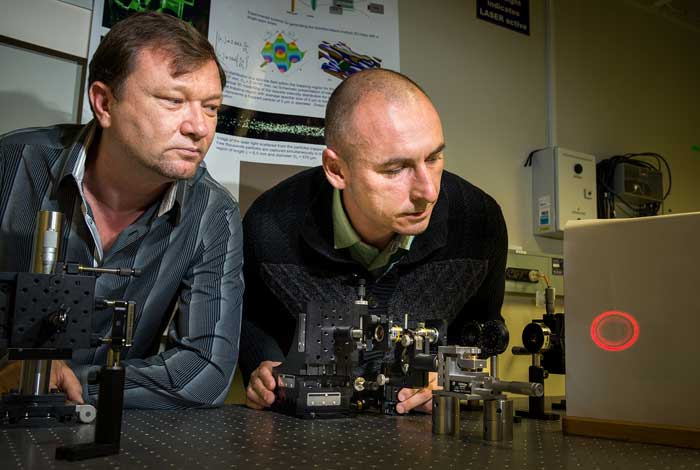Physicists transport marbles with optical tractor beam
The tractor beam—a long-distance invisible attraction beam—is a legendary staple in science fiction. In real life, moving objects using only light seems absurd, if not impossible. However, in a paper published in Nature Photonics, a team of Australian and American physicists successfully transferred glass marble ten centimetres using only a laser beam.
Light is composed of tiny packets of energy called photons and it is through these that light can move objects. Each of these packets of energy has an associated momentum, so when they hit an object, their momentum is transferred to the object, nudging it forward slightly. Like rolling a bowling ball by throwing billions of dandelion seeds at it, scientists can use these photons to move microscopic objects—but only in the direction of the photons’ velocity.
To move the marbles backward, the team used a different approach. They fired a donut-shaped optical beam that heated up the beads. As the back of the beads heated up, the surrounding air pressure lowered and the beads moved backward. When the researchers adjusted the laser’s polarization, they could change whether the marbles moved forwards or backwards.
This technique may eventually be used for remote particle sampling or even for removing air pollutants.
Jet Lag, bacteria, and obesity
Jet lag may cause more than just fatigue. In mice, at least, it also makes them more prone to obesity, according to a study published in Nature last week.
Every life form has an internal clock that keeps track of daily cycles, which are known as circadian rhythms. A team of researchers, led by Eran Elinav at the Weizmann Institute of Science in Isreal, has found that these cycles may be connected to weight. The biologists observed that the composition of gut microbes in both humans and mice changes depending on the host’s circadian rhythm.
The team then tested the effect of jet lag on these populations. They simulated jet lag by disrupting the feeding and sleeping cycles of mice, so that the mice were eating when they would usually be sleeping. These chronically jet-lagged mice gained more weight and displayed an increased risk of diabetes compared to the control group. When researchers analyzed fecal samples, they found that the usual fluctuation in the composition of gut microbiota was disrupted in the mice whose internal clocks had been shifted.
This research may help explain why shift workers have a higher risk of diabetes, as well as the association of disrupted sleep with diseases like cancer, obesity, and cardiovascular disease.
High-speed evolution in Florida lizards
Competition between two species of lizards in South Florida has produced a remarkable example of evolution. A study by researchers at the University of Texas at Austin documented how over the course of just 15 years, green anoles in the area have responded to pressure from invasive brown anoles by developing feet that are better at gripping branches.
The change in the lizards’ physiology may not have turned them into an entirely new species, but it is far from insignificant.
“To put this shift in perspective, if human height were evolving as fast as these lizards’ toes, the height of an average American man would increase from about [5’9’’] today to about [6’4’’] within 20 generations—an increase that would make the average U.S. male the height of an NBA shooting guard,” explained lead author Yoel Stuart.
The scientific term for this phenomenon is called character displacement, and describes how species in competition with each other evolve to take advantage of different resources. In the green anole’s case, this means climbing higher up on branches than any nearby brown anoles. The speed with which this evolution has occurred makes it one of the few well-documented examples of character displacement that biologists have observed.








